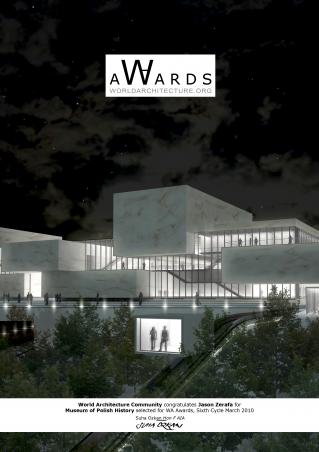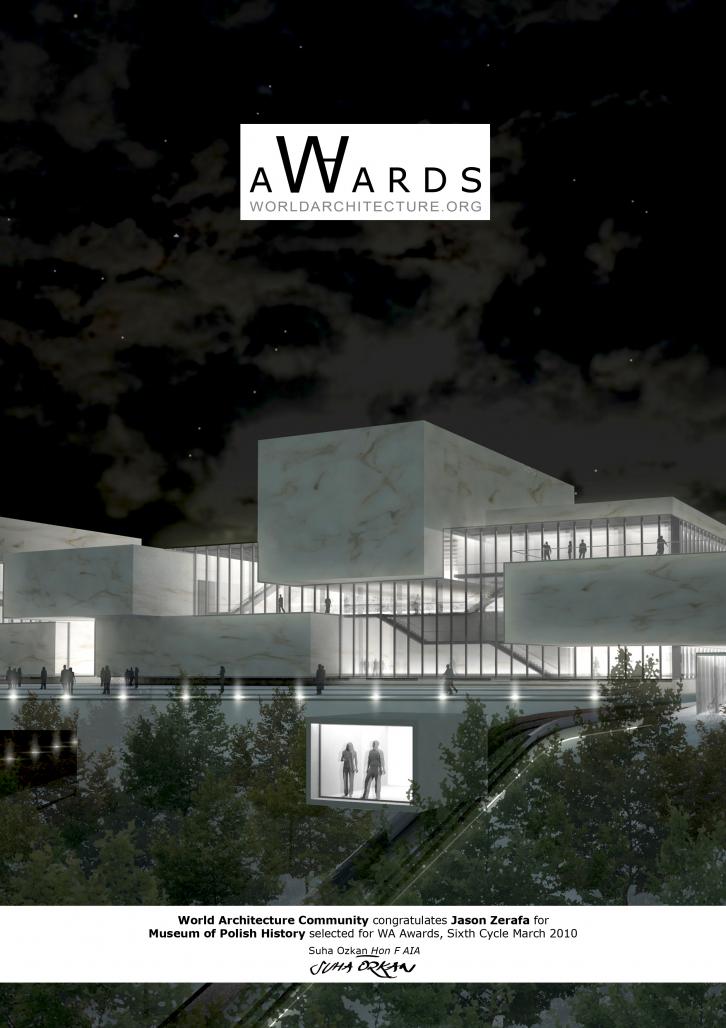for the proposed museum building, we have taken a bold step and inverted the typical exhibition space typology. the full exhibit gallery program is conceived as ten, 3-dimensional monolithic objects, a dramatic departure from the gallery defined exclusively as an interior space. exposing the galleries to be viewed in the round, in space, adds a critical scale dimension to the program, one that is not typically legible in the museum experience. the galleries are given an impressive solidity and monumental scale, and yet many are floating in space- held up on virtual pedestals. it is the complexity of this dual expression of monumentality and lightness which defines the contradiction within the individual museum experience, celebration, judgment and the rejection of sentimentality. the ten gallery s are juxtaposed to each other both vertically and horizontally to create a 3-dimensional cubic composition within and through a linear circulation volume. the s are then push-in and pulled-out like drawers to create a series of interior voids and dramatic interstitial spaces.
the six exterior surfaces of the gallery s, sides, top and underside provide multiple canvases for nonconventional exhibition use. also, in this configuration, the in between, or accidental spaces can become important opportunities for surprise temporary exhibits and mobile museum events and program space.
the ten boxes contain the five chronological divisions for the permanent exhibit program, the two temporary exhibition spaces, and the exhibition related educational zones. the free composition of the gallery boxes does not determine a particular distribution of the permanent galleries; but provides a flexible environment for multiple interpretations of how the galleries can be allocated and the relationships between them. the temporary exhibition space is located in two of the upper gallery boxes clustered together to provide a multi-height venue for temporary exhibits when required. the “high” temporary gallery is a 12m tall box which projects out of the eastern façade and through the roof structure to form a dramatic tower-like element suspended within the museum.
2009
2009
Client: Ministry for Culture and Natural Heritage.
Facility: National History Museum
Location: Warsaw, Poland
Size: 20,000 sm
Status: International Competition Proposal- Stage 1
Design Architect: ZERAFA ARCHITECTURE STUDIO
Design Team: Jason Zerafa, Joaquin Boldrini,Pablo Zamorano, Luis Carmona,
Katherine Moya.
Associate Architect: Gregory T Waugh AIA
MUSEUM OF POLISH HISTORY, WARSAW by JASON ZERAFA in Poland won the WA Award Cycle 6. Please find below the WA Award poster for this project.

Downloaded 1016 times.
Favorited 3 times











